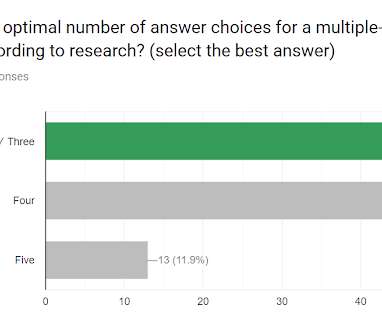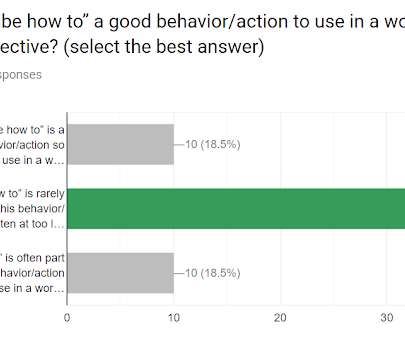How many answer choices is best for a multiple-choice question? Probably not what you think.
Patti Shank
DECEMBER 26, 2019
Last week I discussed a quiz I developed to help people analyze what they know and don't know about developing valuable and valid multiple-choice questions (mcqs). The mcq quiz: [link]. Last week I shared the answer to one of the questions: Is “describe how to” a good behavior/action to use in a workplace learning objective? The answer is no and I explained why.































Let's personalize your content